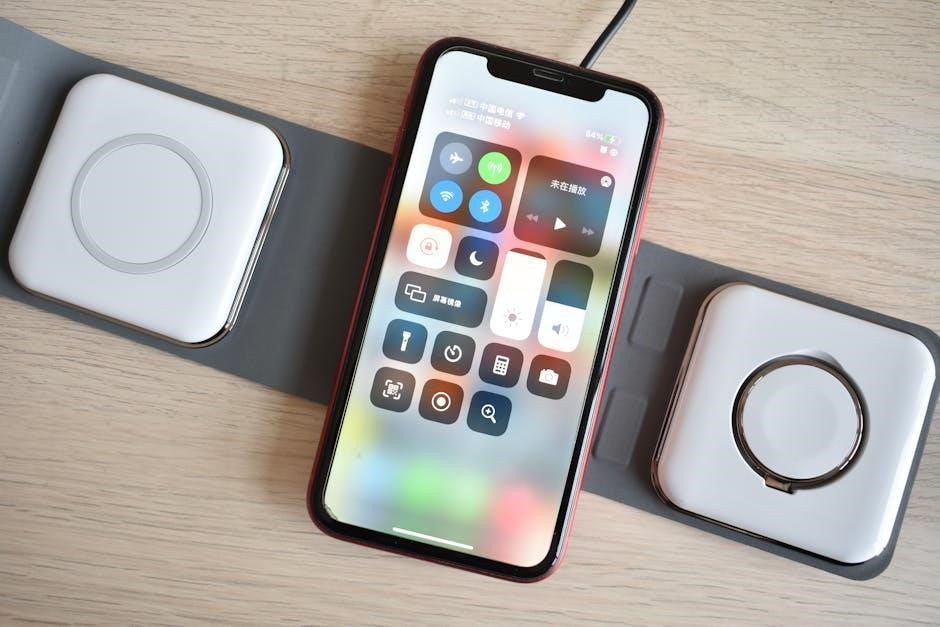
-
By:
- ida
- No comment
panasonic cordless phone troubleshooting guide
Panasonic cordless phones are a popular choice for households and businesses, offering reliable communication with advanced features. Known for their clarity, long battery life, and ease of use, these phones provide flexibility and mobility. However, like any electronic device, they can encounter issues such as no dial tone, static noise, or connectivity problems. This guide will help you troubleshoot common problems and restore your phone’s optimal performance, ensuring uninterrupted communication.

With proper care and maintenance, Panasonic cordless phones can deliver years of dependable service. By understanding the causes of common issues and following simple troubleshooting steps, you can resolve most problems quickly and efficiently. This guide is designed to empower you with the knowledge to address these challenges and keep your phone functioning smoothly.

Common Issues with Panasonic Cordless Phones
Panasonic cordless phones, while reliable, can experience issues like no dial tone, static noise, or poor call quality. Connectivity problems, such as dropped calls or handset registration issues, may also occur. Battery-related concerns, like short battery life or charging failures, are common. Additionally, interference from other devices can disrupt signal strength. Understanding these issues is key to effective troubleshooting and restoring optimal performance for uninterrupted communication.
Addressing these problems often involves simple steps, such as checking connections or resetting the handset, to ensure your phone functions smoothly.
No Dial Tone
A common issue with Panasonic cordless phones is the absence of a dial tone, which can prevent you from making or receiving calls. This problem often occurs due to disconnections, line issues, or base unit malfunctions. If your phone is not producing a dial tone, it may indicate that the handset is not properly connected to the base or that there is a problem with the phone line itself.
To address this issue, start by ensuring the phone is correctly connected to the base unit. Verify that the base is powered on and that the handset is properly seated on the charger. If the issue persists, check the phone line for any damage or disconnections. Unplug all devices connected to the phone jacks, wait for 30 seconds, and then plug one phone back in to test the line. This step can help identify if the problem lies with the line or the phone itself.
Another potential cause is a short on the line or interference from other devices. Try isolating the phone by disconnecting other devices connected to the same line, such as answering machines or caller ID boxes. If the dial tone returns, the issue may be related to one of these devices. Additionally, ensure that the base unit is placed in an area free from interference caused by other electronic devices, such as routers or microwaves.

If the problem persists after these steps, it may be necessary to reset the phone. Locate the reset button on the base unit, press and hold it for 5 seconds, and follow any on-screen instructions to complete the reset process. Refer to the user manual for specific guidance, as the reset procedure may vary depending on the model.
In some cases, the issue may be related to the phone’s firmware. Check for any available firmware updates and install them to ensure your phone is running the latest software. Firmware updates often include bug fixes that can resolve issues like the absence of a dial tone.

If none of these steps resolve the issue, it may be advisable to contact a professional technician or Panasonic support for further assistance. Persistent problems could indicate a hardware issue that requires expert diagnosis and repair. By following these troubleshooting steps, you can identify and address the root cause of the no dial tone issue and restore your phone’s functionality.
Static Noise
Static noise is a common issue with Panasonic cordless phones, often caused by interference from other electronic devices or physical obstructions. This problem can disrupt calls, making communication difficult. To address static noise, it’s important to identify the source and take corrective action.

One of the primary causes of static is interference from nearby devices, such as routers, microwaves, or televisions. These devices emit electromagnetic waves that can disrupt the signal between the base unit and the handset. To minimize this, move the base unit away from other electronics and ensure it is placed in an open area. Additionally, physical obstructions like walls or furniture can weaken the signal, so repositioning the base to a central location can improve call quality.
Another step to reduce static is to reset the phone. Press and hold the reset button on the base unit for 5 seconds, then follow any on-screen instructions. This can resolve software-related issues causing the noise. Updating the firmware is also recommended, as it often includes fixes for signal quality and interference problems.
If static persists, check the batteries in the handset. Weak or damaged batteries can lead to poor signal strength and increased noise. Replace them with high-quality rechargeable batteries designed for cordless phones. Ensure the base unit is placed on a stable, non-metallic surface to avoid signal degradation.
For severe static, consider using a wireless range extender or repeater to boost the signal. This can enhance the connection between the base and handset, reducing interference. Avoid placing the base near metal objects or surfaces, as they can reflect or block the signal.
By addressing these factors, you can significantly reduce static noise and enjoy clearer calls. If the issue remains unresolved, contact Panasonic support or a professional technician for further assistance, especially if the phone is under warranty. Proper troubleshooting can restore your phone’s performance and ensure reliable communication.

Troubleshooting No Dial Tone
If your Panasonic cordless phone has no dial tone, start by checking the connections. Ensure the phone is properly plugged into a working phone jack and the base unit is powered on. Verify that the volume is not muted or set too low. If the issue persists, unplug the base unit, wait 30 seconds, and plug it back in to reset the system. If the problem remains, test the phone line with another device to confirm it’s working. If all else fails, contact Panasonic support for further assistance.
- Check all connections and ensure they are secure.
- Verify the phone line is active and functioning.
- Reset the base unit by unplugging and replugging it.
Checking Connections
When troubleshooting a Panasonic cordless phone with no dial tone, one of the first steps is to check all connections. Ensure the base unit is properly connected to both the power source and the phone line. Verify that the phone cord is securely plugged into the correct jack on both the base unit and the wall outlet. If using a splitter or other device, ensure it is functioning correctly and not causing interference.
Next, check the connection between the handset and the base unit. Make sure the handset is correctly registered to the base. If the handset is not registered, it will not communicate with the base, leading to no dial tone. Refer to the user manual for registration instructions. Additionally, ensure the battery is fully charged and the handset is properly seated on the base or charger.
Another critical step is to verify the phone line itself. Unplug the phone line from the base unit and test it with another phone to ensure the line is active and functioning. If the line works with another phone, the issue may lie with the base unit or handset. If the line does not work, contact your service provider to resolve the issue.
Finally, check for any physical obstructions or damage to the cords or connections. Damaged or frayed cords can disrupt the signal, leading to no dial tone. Replace any damaged cords and ensure all connections are secure. By systematically checking each connection, you can identify and resolve the issue causing the lack of dial tone on your Panasonic cordless phone.
- Verify the base unit is connected to the power source and phone line.
- Check the handset registration and battery status.
- Test the phone line with another device to ensure it’s active.
- Inspect cords for damage and ensure all connections are secure.
By following these steps, you can quickly identify and resolve connection-related issues, restoring your phone’s functionality and ensuring clear communication.
Volume Settings
When experiencing issues with your Panasonic cordless phone, such as no dial tone or poor call quality, it’s essential to check the volume settings. Incorrect volume levels can often be the root of seemingly complex problems. Start by ensuring the ringer volume is not set to zero or muted. Locate the volume buttons on the handset, typically found on the side or top, and adjust them to a higher setting. You should hear a confirmation tone as you increase the volume.
Next, check the speaker volume if you’re using the phone in speakerphone mode. If the speaker is muted or the volume is too low, you won’t hear the dial tone or incoming calls. Press the mute button (if available) to ensure it’s not active, and adjust the volume to an audible level. Additionally, verify the volume settings for the base unit, as some models allow independent volume control for the ringer and handset.
If the volume settings appear correct but you’re still experiencing issues, consider resetting the handset. This can often resolve software-related glitches affecting the volume. To reset, press and hold the * and # keys simultaneously for 5 seconds, then release. This will restore the handset to its default settings, including volume levels. After resetting, recheck the volume to ensure it’s set appropriately.
Finally, ensure the base unit’s volume is not set too low. Some Panasonic models allow you to adjust the base unit’s ringer volume separately from the handset. If the base unit’s volume is too low, you may not hear incoming calls or the dial tone. Adjust the base unit’s volume to a higher setting and test the phone again.
In summary, checking and adjusting the volume settings is a simple yet effective step in troubleshooting your Panasonic cordless phone. By ensuring the ringer and speaker volumes are set correctly and resetting the handset if necessary, you can resolve many volume-related issues and restore proper functionality to your phone.
- Adjust the ringer and speaker volumes on the handset.
- Ensure the mute function is not active.
- Reset the handset to restore default volume settings.
- Check and adjust the base unit’s volume if applicable.

By following these steps, you can quickly identify and resolve volume-related issues, ensuring your Panasonic cordless phone operates at its best.
Base Unit Issues
The base unit of your Panasonic cordless phone plays a critical role in maintaining connectivity and functionality. If the base unit is not working properly, it can lead to issues such as no dial tone, dropped calls, or poor call quality. Identifying and addressing base unit problems is essential to ensure your phone operates smoothly. Below are some common base unit issues and steps to resolve them.
One of the most common base unit issues is a loss of power. If the base unit is not receiving power, the entire phone system will fail to function. Start by checking the power cord to ensure it is securely connected to both the base unit and the electrical outlet. If the cord is damaged, replace it with a compatible one. Additionally, verify that the outlet is working by plugging in another device. If the base unit still does not power on, it may require professional repair or replacement.
Another issue could be poor connectivity between the base unit and the handset. If the handset is not registering with the base unit, try resetting the system. Unplug the power cord from the base unit, wait for 30 seconds, and then plug it back in. This simple step can often resolve registration and connectivity problems. Ensure the handset is placed on the base unit to synchronize properly. If the issue persists, refer to the user manual for specific reset instructions.

Interference from other electronic devices can also disrupt the base unit’s performance. Devices such as routers, microwaves, and televisions can interfere with the phone’s signal. To minimize interference, place the base unit in a central location, away from other electronic devices. Elevating the base unit can also improve signal strength and coverage. Avoid placing it in enclosed spaces or areas with physical obstructions.
If the base unit is damaged or malfunctioning, it may need to be replaced. Look for signs of physical damage, such as cracks or burn marks, and check for error messages on the handset’s display. If the base unit is no longer under warranty, consider purchasing a replacement. Ensure the new base unit is compatible with your existing handsets to maintain seamless functionality.
In summary, base unit issues can significantly impact the performance of your Panasonic cordless phone. By addressing power problems, ensuring proper connectivity, minimizing interference, and replacing damaged units, you can restore your phone system to optimal working condition. Regular maintenance and proper placement of the base unit can also help prevent future issues.
- Check the power cord and electrical outlet for connectivity issues.
- Reset the base unit to resolve registration and synchronization problems.
- Minimize interference by relocating the base unit.
- Inspect for physical damage and replace the base unit if necessary.
By following these steps, you can identify and address base unit issues effectively, ensuring your Panasonic cordless phone functions reliably.
Static or Poor Call Quality
Static or poor call quality on your Panasonic cordless phone can be frustrating and disrupt communication. Common causes include interference from other electronic devices, such as routers, microwaves, or televisions. To address this, move the base unit away from these devices and place it in a central, elevated location. Ensure the base unit is not obstructed by walls or furniture. Additionally, check for firmware updates, as outdated software can affect call quality. By minimizing interference and optimizing placement, you can improve clarity and enjoy smoother conversations.

- Move the base unit away from electronic devices.
- Place the base unit in a central, elevated location.
- Check for and install firmware updates.
Interference Sources
Interference is a common cause of static or poor call quality on Panasonic cordless phones. This disruption occurs when other electronic devices or physical obstructions interfere with the signal between the base unit and the handset. Understanding the sources of interference is key to resolving the issue and improving call clarity.
One of the most frequent sources of interference is other wireless devices in the vicinity. Devices such as Wi-Fi routers, microwaves, televisions, and baby monitors operate on similar frequency bands and can disrupt the phone’s signal. Additionally, cordless devices like neighboring cordless phones or walkie-talkies can cause interference if they share the same frequency.
Physical obstructions in your home or office can also contribute to poor call quality. Walls, ceilings, and large furniture can block or weaken the signal between the base unit and the handset. This is especially true for multi-story buildings or homes with thick walls, where the signal strength may degrade significantly.
Another source of interference is electrical devices plugged into nearby power outlets. Appliances like refrigerators, air conditioners, and fluorescent lighting can generate electromagnetic interference (EMI), which can affect the phone’s performance. Even devices connected to the same power circuit as the base unit can cause disruptions.
To minimize interference, consider relocating the base unit to a central, elevated position away from other electronic devices. Avoid placing it near metal objects or surfaces, as these can reflect or block the signal. Additionally, updating the phone’s firmware can help improve its ability to handle interference and maintain a stable connection.
By identifying and addressing these interference sources, you can significantly enhance the call quality of your Panasonic cordless phone. Regularly assessing your environment and adjusting the placement of your phone system can ensure uninterrupted and clear communication.